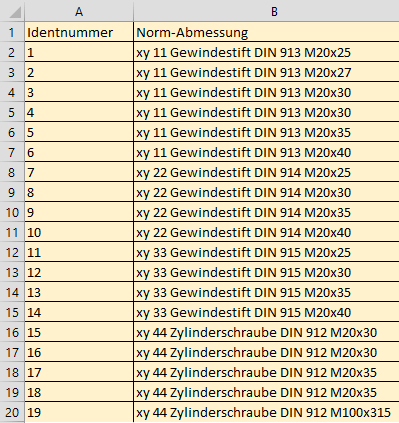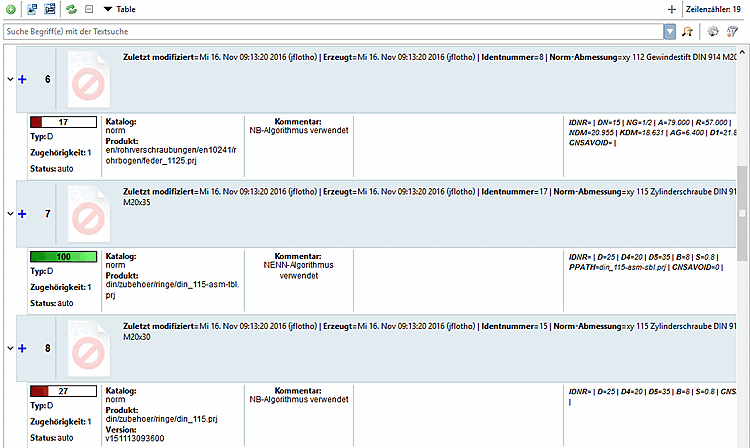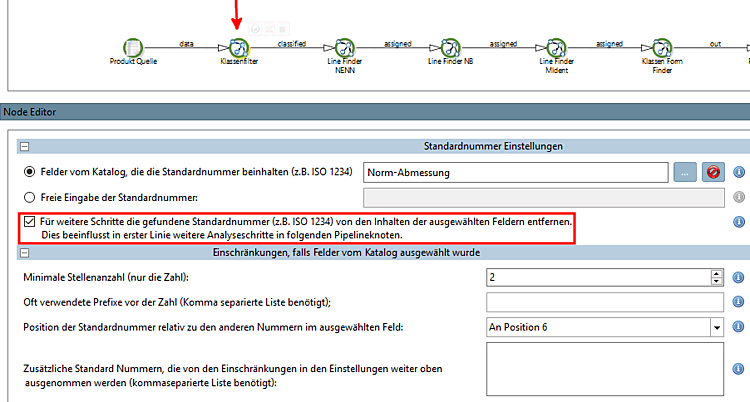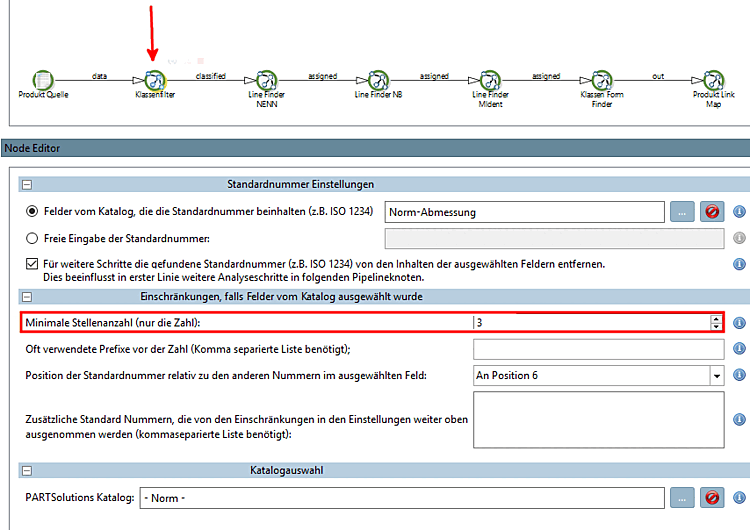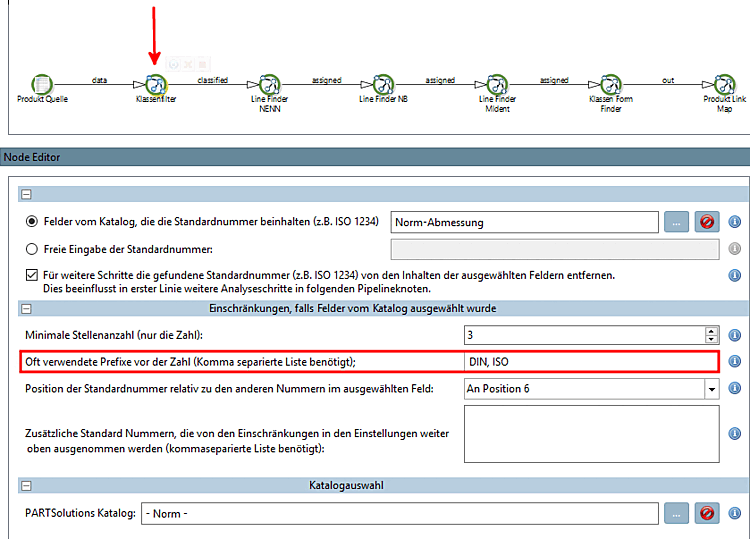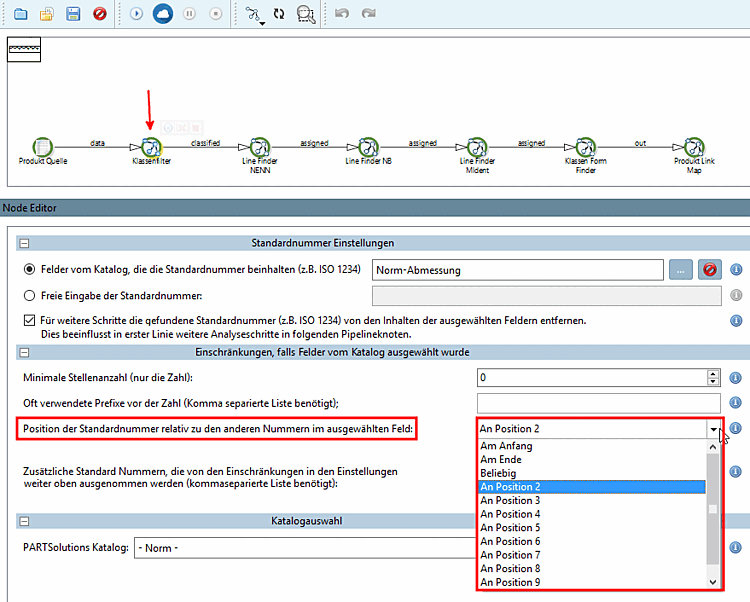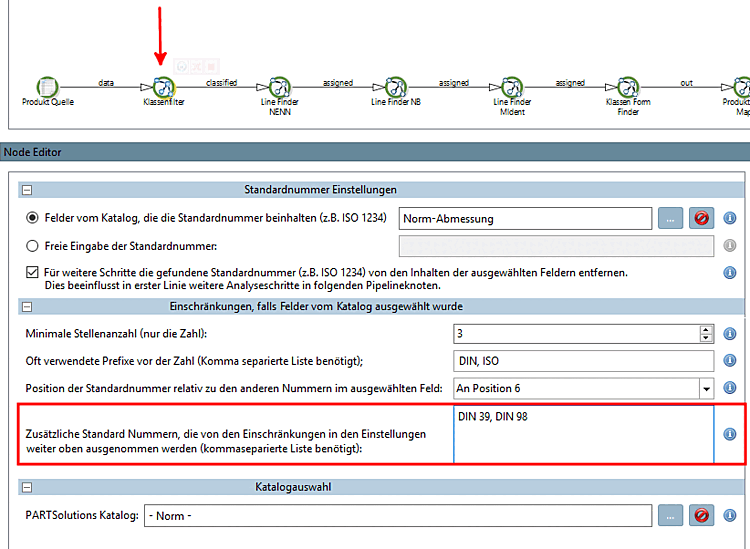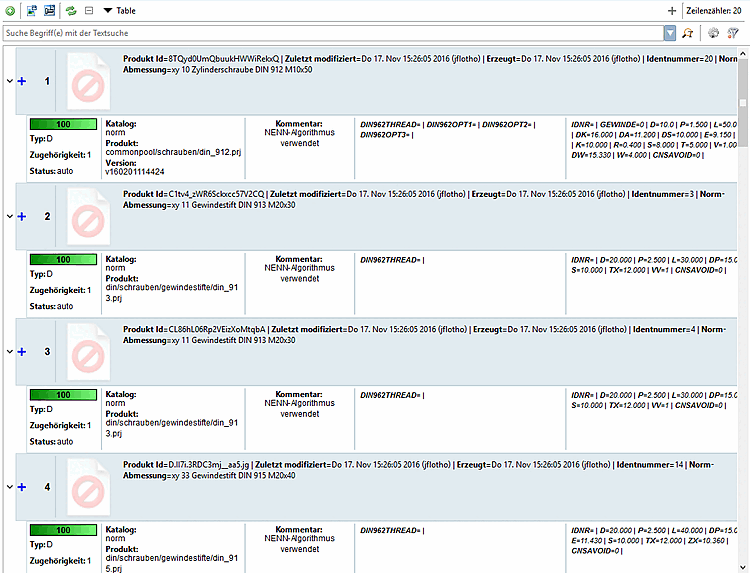If all decisive data are in separated columns, a unique assignment is very simple.
The additional options explained here are particularly helpful if the core data (and possibly other additional data) are all in one field.
|
The following illustrations are based on the adjacent CSV file, in which the key information is contained in a single column (here "Standard dimension").[a] If there is any other information in the field in addition to the decisive core data that is not relevant for the assignment, additional information must be provided to make the core data recognizable. Example (adjoining figure): Information, irrelevant for the assignment, is the string "xy <number>". |
|
[a] The example file used | |
Automatic assignment is not possible without intelligent additional settings.
The following additional settings in the class filter [Class Filter] node are used to obtain clear assignments despite certain difficulties:
Free entry of the standard number [Free input of Standard number]: This option is suitable for manual, step-by-step assignment. One standard at a time.
For further steps, remove the standard number found (e.g. ISO 1234) from the contents of the selected fields. This primarily influences further analysis steps in the following pipeline nodes: [Remove found Standard number (e.g. ISO 1234) from selected fields for further steps in pipeline]
In the example, DIN 913 is removed after a hit, which makes the next analysis step (= finding the correct dimension M20x30) easier.
Minimum number of digits (only the number) [Minimum length of the number (only the number)]:
In the example two-digit numbers such as 11 for example are not suitable, because the value for minimum length of number is 3. So the class can be identified more clearly.
Frequently used prefixes before the number (comma-separated list required); [Often used prefixes before number (use comma separated list)]:
In the example the class "DIN 913" can clearly be identified by the prefix "DIN".
Position of the standard number relative to the other numbers in the selected field [Position of the Standard number in the selected field relatively to the other numbers in the field]:
In the example the class has been identified by position "2", which makes it unique.
Additional standard numbers that are excluded from the restrictions in the settings above (comma-separated list required) [Additional Standard numbers ignoring the restrictions in the settings above (use comma separated list)]:
If, for example, Minimum number of digits (only the number) [Minimum length of the number (only the number)] is set to the value 3, then DIN 39, DIN 98, etc. can be explicitly specified here in order to include them in the process again.
With the use of above setting options an unique assignment is possible.


